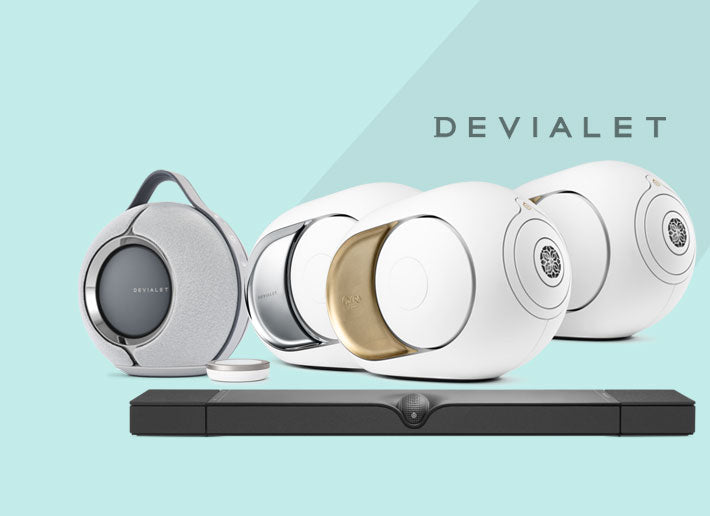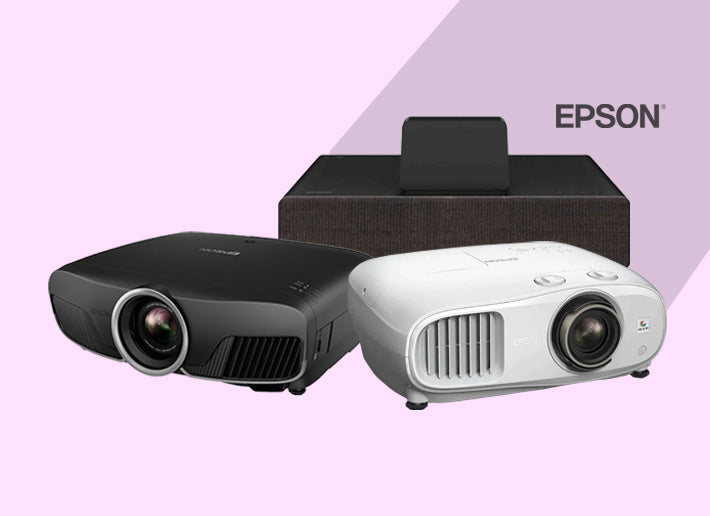
Should you buy a projector or a flat screen for your home theatre to ensure the most engrossing entertainment experience?
The choice has become more difficult as on one hand projectors have become a lot brighter, while consistently remaining affordable in the last couple of years. On the other hand, TVs have become bigger, brighter and cheaper. They also have a leg-up with 4K and 8K display resolution.
Given the flurry of benefits both offer, the question arises: Projector versus TV - what choice should you make to create a compelling home entertainment experience that would comprise movie marathons with family, gaming fun with friends and rejuvenating listening experience after you have wrapped up your work for the day.
Don’t let the complexity of decision-making throw a wedge in your entertainment
We are here to help you decide which option would best cater to your needs. We have comprehensively analysed both the options in terms of image quality, purchase and upkeep cost, installation process, convenience, impact on your eyes, sound quality and product lifespan.
Here’s the quick guide that covers key factors to keep in mind while deciding between the plat screen or projector for your home theatre.
Consider the long-term impact of blue light on your eyes
One of the mainstream factors in TV versus projectors is considering the long-term effects of the blue light that emits from LCD, LED and other variants of a television/flat screen display. One major repercussion of high levels of exposure to blue light is damage to the eyes and subsequent destruction of the retina. In the case of a flat panel display, you are going to look straight at the light source while viewing.
While projectors on the other hand produce blue light that doesn’t directly hit our eyes, and the damage thereby is cut down by several times. If you have a projector installed in your entertainment space, the blue light will first hit on your projector screen and not directly pass on to your eyes. The projection screen absorbs some of those damaging wavelengths, reducing the amount of blue light that reaches your eyes. This is what makes the projector a better alternative.

Screen size matters when it comes to image quality
A good TV screen usually maxes out around 80 inches, although some exceed 100 inches. But that’s the practical limit to a jumbo-sized HDTV. Besides, they cost a fortune and require someone to install them. That’s where it becomes an easy win for projectors, as they offer much larger images that are crisp, clear and do not limit the users to ascertain screen size.
As opposed to an ultra-expensive flat-screen display, projectors are favoured any given day, as they offer a superb image quality without ripping your pocket off like a high-end UHD TV.
So, whether it is watching movies in a theatre-like ambience, bingeing TV shows, or playing your favourite video game, a projector usually outweighs the benefits of ultra-large screens.
When it comes to brightness, it can influence your purchase decision
Brightness matters when it comes to deciding between the projector systems and flat-screen displays. That’s because the dimmer a screen is, the darker the room needs to be for the picture to stay clear.
If you have a brightly lit room, the image quality won’t exactly be stellar. Most projectors require a dim room to produce a crisp picture. There is no denying the fact that projectors just don’t put out enough light to compete with a bright, sunny, open living room. And if it does, it won’t be a part of the affordable category any longer.
TVs are known to easily put out plenty of brightness. But then they say, “Brighter isn’t always better”. For instance, if you’re watching in a dark room, the lower light of a projector might be easier on the eyes. But for general use, the convenience and multifunctionality offered by a TV are phenomenal.
Projector systems cannot beat LED TVs when it comes to brightness. In the end, if you want a bright and vibrant picture in any light, with little to no upkeep costs involved, the TV would be a wiser option.
Contrast and color accuracy
A variation of black levels and brightness defines the contrast. While one can guess a projector’s brightness capabilities just by looking at its lumen rating, black levels can be determined by how dark the projection room gets. The contrast between light and dark can be hugely degraded with ambient light.
It can also be significantly brought down by a poor projection surface. Most projectors are not equipped with the ability to battle with ambient light and fail to heighten perceived contrast like TVs. Colour accuracy for large projection displays also poses a challenge. Projector systems use a spinning colour wheel to manufacture colour, often leading to a compromise in colour accuracy.
Also, factor in that the pixel size of LCD and LED big-screen televisions are designed as small enough to maintain a sharp image given the display size.
Consider the effort and planning that goes into the installation process
TV offers the convenience of a simpler set-up and ease of use. Despite being fragile an large in size, they’re simple to place in a home theater setup. Plus, they act as a great unifier for your devices and equipment, since everything plugs directly into the TV itself and, in most cases, is even controlled via the TV’s remote. Unless you’re mounting the TV to a wall, installation is relatively painless. And even if you do opt for the wall-mounted setup, you’ll be able to complete the project on your own.
Projectors require more planning and effort to install in comparison to flat panel displays. The first thing to consider is your screen. Will you be painting a wall, setting up a free-standing screen, or opting for a motorized screen that will need to be attached to your ceiling or wall? Regardless of the method, firstly you’ll need to be sure you have the necessary space because we all know, these screens are pretty big. Secondly, you’ll need to make sure the projector is correctly positioned.
Actually, it would be great to hire a professional installer to perform the activities. Before buying a projector, it is advisable to decide where you are going to mount it or how big screen you want. Then there are cables that you need to run from your receiver all the way to the projector, that would come bearing additonal cost.
If we talk about space broadly, having enough space means having enough distance from the screen to make viewing comfortable. If you try to fit an oversized screen into a room that’s too small, you’ll be forced to sit too close, making it hard to take in all the details of the content.
Sound quality is a key determining factor
Since TVs have usable speakers, they sound like a more feasible option. While some projectors come with built-in sound speakers, don’t lose sight of the fact that for truly cinematic or an immersive experience, you may subsequently want to invest in a dedicated speaker system. If you choose to go ahead with installing a projector system, remember getting a receiver and a couple of speakers to place alongside your screen.
A TV can handle the basic audio needs on its own, but beyond that for an upgraded audio you may want to consider checking out good options in the category of surround system or a soundbar.
Image resolution

Premium 4K TVs, with their wide color gamut and high dynamic range, are expensive. You might ask, ”How about high-performance 4K HDR projectors?” Trust us, you’re better off paying for a good 4K HDR TV and supplementing with a sound system — or an Ultra HD Blu-ray player — than you are buying a high-end 4K HDR projector. Undoubtedly, when it comes to resolution per dollar, TVs stand on the winning end of the game.
Cost is the bottom line for many individuals
The higher the brightness and resolution, the superior the image and sound quality, and resultantly, the cost goes up. In nutshell, HDTVs cost higher than projectors. In fact, for the price of a 108-inch LED, you can buy same screen size HD projector, along with a good sound system. That’s why projectors continue to remain a much affordable option than flat-screen TVs.
Product lifespan of projectors versus flat screen displays
Projectors use lamps that usually have a shell life of 1,000 – 5,000 hours, which would subsequently burn out. Consequently, most projectors will require lamp replacement almost every year, which can turn out to be an expensive upkeep/maintenance cost. On the other hand, HD TVs would easily last for almost 100,000 hours without any maintenance.
A final word on projectors vs TV
All we can say is, in the end, the one that’s better for you really comes down to your personal preference and how you plan to use it. Also, budget and available space top the key reasons people consider to base their purchase decision on. Hopefully our guide will clear most of the confusion around choosing between a big TV or a projector for your home theater. Should you need any more assistance in understanding the concepts of flat panel displays against projectors, we’re are a click away. We’re waiting to help you immerse in a happy viewing experience, every day!
For more information on flat-panel displays and projectors as per your room dimensions and budget, contact Ooberpad at 022-3080-8050, or at support@ooberpad.com









